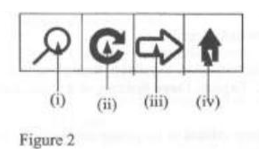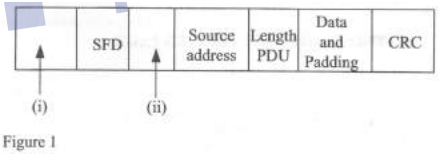
1. Budget
A rule of thumb is to never make technology procurement decisions based on price alone. There’s no denying though that you can only cut your coat according to your cloth. If a topology is unaffordable, it’s off the table no matter how perfectly suited it might be for your situation.
In any case, irrespective of what your preferred topology is, there’ll almost always be a lower-priced alternative that’s nearly as effective. On pricing matters, bus and ring topologies are quite cost-effective while star, mesh, tree and hybrid topologies are expensive.
2. Hardware Resources
Certain network topologies work best with certain hardware. And vise-versa. So before you make a decision on the topology to adopt, perform an inventory of your current hardware. You may also already have the hardware needed to implement a certain type of topology. So as opposed to buying everything from scratch, such existing resources give you a head start.
For instance, you may have hardware limitations such as the length of the network cable. In that case, you’d go for a topology that requires the least amount of cable for connecting nodes. Bus and star topologies perform pretty well in this regard.
3. Ease of Implementation
If you’ll contract a third party to install and/or maintain your network, then the complexity of the network topology you choose is perhaps a non-issue. A competent networking professional will have the education and experience needed to comprehend what each topology entails and implement it accordingly.
However, if you expect to leave network implementation in the hands of novices or individuals without the requisite IT training, then the ease of the topology should be a major factor in your choice. In this case, the bus and star topologies score pretty well. The mesh, tree and hybrid, on the other hand, are complex and difficult for a layman to install or understand.
4. Size of Network
How many devices are going to be on your network? How geographically dispersed are they? How far from the ‘center’ is the furthest device? Some topologies are inadequate or expensive when applied to large networks. A topology that works perfectly for a 5-device network may prove a disaster when applied to a 10,000-device organization.
Part of the inventorying process we referred to in point 2 should include determining the total number of devices to be interconnected. Armed with this information, you can choose the topology that would best serve the purpose. The tree topology works well with large networks. The bus topology is best suited for small organizations.
5. Reliability
When it comes to reliability, network topologies aren’t created equal. If you are looking for high reliability because you are in an industry where even brief downtime and delays are frowned upon (e.g. banking), then network reliability is a fundamental consideration. Choose the topology that delivers the highest reliability.
Ring topology performs pretty well under heavy loads but is prone to a single point of failure. Star topology doesn’t depend on any node but the network will collapse if the hub fails. Mesh and hybrid topologies score highest on the reliability front.
6. Future Expansion
If you expect your organization to grow in size in the medium to long-term, opt for a network topology that’s readily scalable. Identify the topology that’s easy to add new nodes to, without negatively affecting network performance or the user experience of other devices on the network.
The tree topology is perhaps the most compatible with future expansion requirements as it’s fairly easy to extend or shrink the network. The bus topology is also easy to expand but only to a certain extent which is why it would only work for small networks.
Titany answered the question on November 30, 2021 at 11:18
- Functions of Intermediary Devices(Solved)
Functions of Intermediary Devices
Date posted: November 30, 2021. Answers (1)
- Distinguish between intermediary and host devices(Solved)
Distinguish between intermediary and host devices
Date posted: November 30, 2021. Answers (1)
- Explain two circumstances under which unshielded twisted pair (UTP) cables are most applicable in network installation(Solved)
Explain two circumstances under which unshielded twisted pair (UTP) cables are most applicable in network installation
Date posted: November 30, 2021. Answers (1)
- Outline two factors that should be considered when selecting an Internet bandwidth, other than cost(Solved)
Outline two factors that should be considered when selecting an Internet bandwidth, other than cost
Date posted: November 30, 2021. Answers (1)
- Data communication system should exhibit distinctive features. Explain two desirable features that could be exhibited by the system(Solved)
Data communication system should exhibit distinctive features. Explain two desirable features that could be exhibited by the system
Date posted: November 30, 2021. Answers (1)
- Define the term node as applied in data transmission(Solved)
Define the term node as applied in data transmission
Date posted: November 30, 2021. Answers (1)
- Figure 2 shows a typical tool bar of a browser program. Outline the functions of
each of the tools labelled (i), (ii), (iii) and (iv)
(Solved)
Figure 2 shows a typical tool bar of a browser program. Outline the functions of
each of the tools labelled (i), (ii), (iii) and (iv)

Date posted: November 30, 2021. Answers (1)
- Outline four roles of user agent as used in email software(Solved)
Outline four roles of user agent as used in email software
Date posted: November 30, 2021. Answers (1)
- Describe two modes of licensing for network software(Solved)
Describe two modes of licensing for network software
Date posted: November 30, 2021. Answers (1)
- Figure 1 shows an Ethernet frame. Outline the parts labelled(Solved)
Figure 1 shows an Ethernet frame. Outline the parts labelled

Date posted: November 30, 2021. Answers (1)
- Explain three circumstances that would necessitate the installation of a point-to-point protocol in corporate networks(Solved)
Explain three circumstances that would necessitate the installation of a point-to-point protocol in corporate networks
Date posted: November 30, 2021. Answers (1)
- Cloud computing is widely used in business firms. Explain two benefits that could be influencing the trend(Solved)
Cloud computing is widely used in business firms. Explain two benefits that could be influencing the trend
Date posted: November 30, 2021. Answers (1)
- Distinguish between channel B and channel D as used in integrated services digital network (ISDN)(Solved)
Distinguish between channel B and channel D as used in integrated services digital network (ISDN)
Date posted: November 30, 2021. Answers (1)
- Outline two applications of a CSMA/CD technology(Solved)
Outline two applications of a CSMA/CD technology
Date posted: November 30, 2021. Answers (1)
- Describe two classification of fiber optic cables(Solved)
Describe two classification of fiber optic cables
Date posted: November 30, 2021. Answers (1)
- TCP /IP is known for it capability to provide reliable transportation of data packets from the source to destination. Explain three features of the protocol...(Solved)
TCP /IP is known for it capability to provide reliable transportation of data packets from the source to destination. Explain three features of the protocol that promotes its reliable transport
Date posted: November 30, 2021. Answers (1)
- Explain three functions of data link layer(Solved)
Explain three functions of data link layer
Date posted: November 30, 2021. Answers (1)
- Routing protocols are critical in data transmission. Explain three functions that likely to be performed by these protocols(Solved)
Routing protocols are critical in data transmission. Explain three functions that likely to be performed by these protocols
Date posted: November 30, 2021. Answers (1)
- Differentiate between symmetric and asymmetric keys as used in network security(Solved)
Differentiate between symmetric and asymmetric keys as used in network security
Date posted: November 30, 2021. Answers (1)
- A good network design should produce a scalable network. Outline four ways of achieving this network objective(Solved)
A good network design should produce a scalable network. Outline four ways of achieving this network objective
Date posted: November 30, 2021. Answers (1)